A seven-year Department of Conservation study into combined predator control methods has revealed great news for the survival of our native whio (blue ducks).
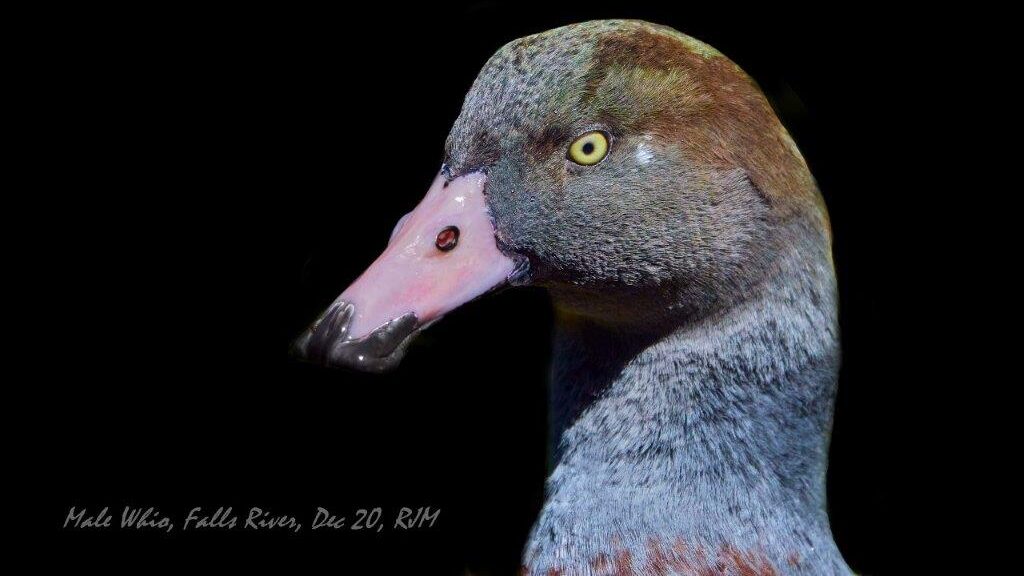
The findings show that 1080 used alongside trapping can keep introduced predators at bay – giving whio populations a chance to grow. The study comes on the back of research that showed trapping alone can struggle to keep whio populations stable.
We talk to Kate Steffens, whose recent research has shed light on the fascinating interrelationship between mast years, predator control tools and control area size.
The challenge of whio population growth
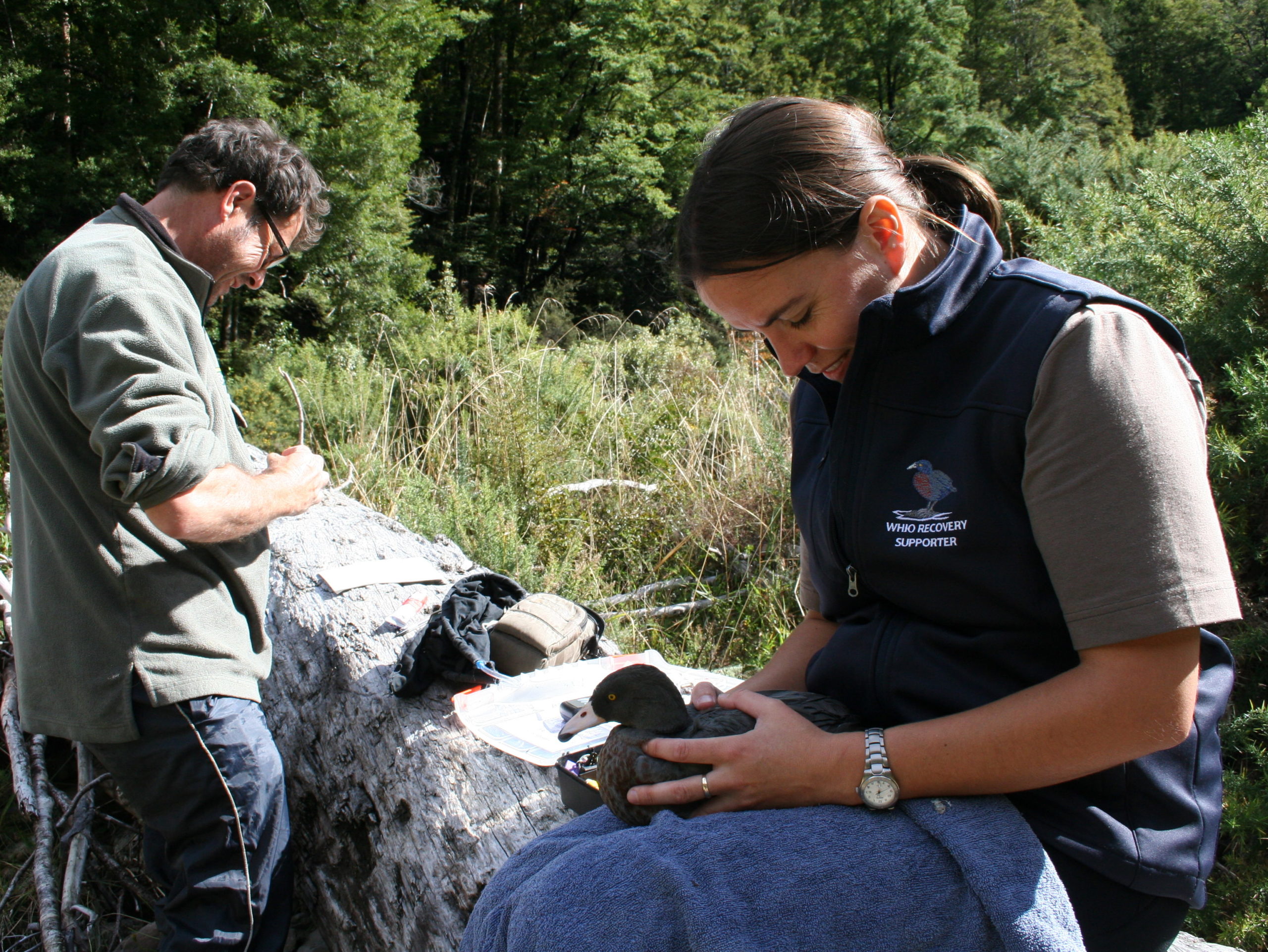
Can combined predator control techniques lead to population growth for the plucky whio?
That’s the question Kate Steffens and her fellow researchers tackled in their seven-year study into predator control methods for whio living in beech forests.
Whio (blue duck) are unique birds that thrive in the fast-flowing and turbulent waters of Aotearoa’s high country. But their numbers have been declining due to their vulnerability to introduced predators, with stoats posing the biggest threat.
Whio nest on the ground and produce less offspring compared to other ducks, making their populations particularly vulnerable to predation.
Kate says, “Previous studies by Amy Whitehead have shown that river-focused trapping alone can stop populations from rapidly declining, and shift them to slowly declining. But it often isn’t enough to ensure long term population persistence of whio.
“Part of this problem comes from the number of whio that live alongside rivers flowing through beech-dominated forests. Beech forests pose an additional challenge for predator control because every few years beech trees drop their seeds in vast, vast quantities, in what is called a mast event.
“This leads to a boom in food for rodents, ultimately leading to a spike in stoat numbers,” says Kate.
Taking a combined approach
“We wanted to see whether large-scale 1080 operations every few years on top of river-focused trapping could combat the effects of mast events. We were ideally looking to find if this approach would be enough for whio populations to increase in the South Island,” she says.
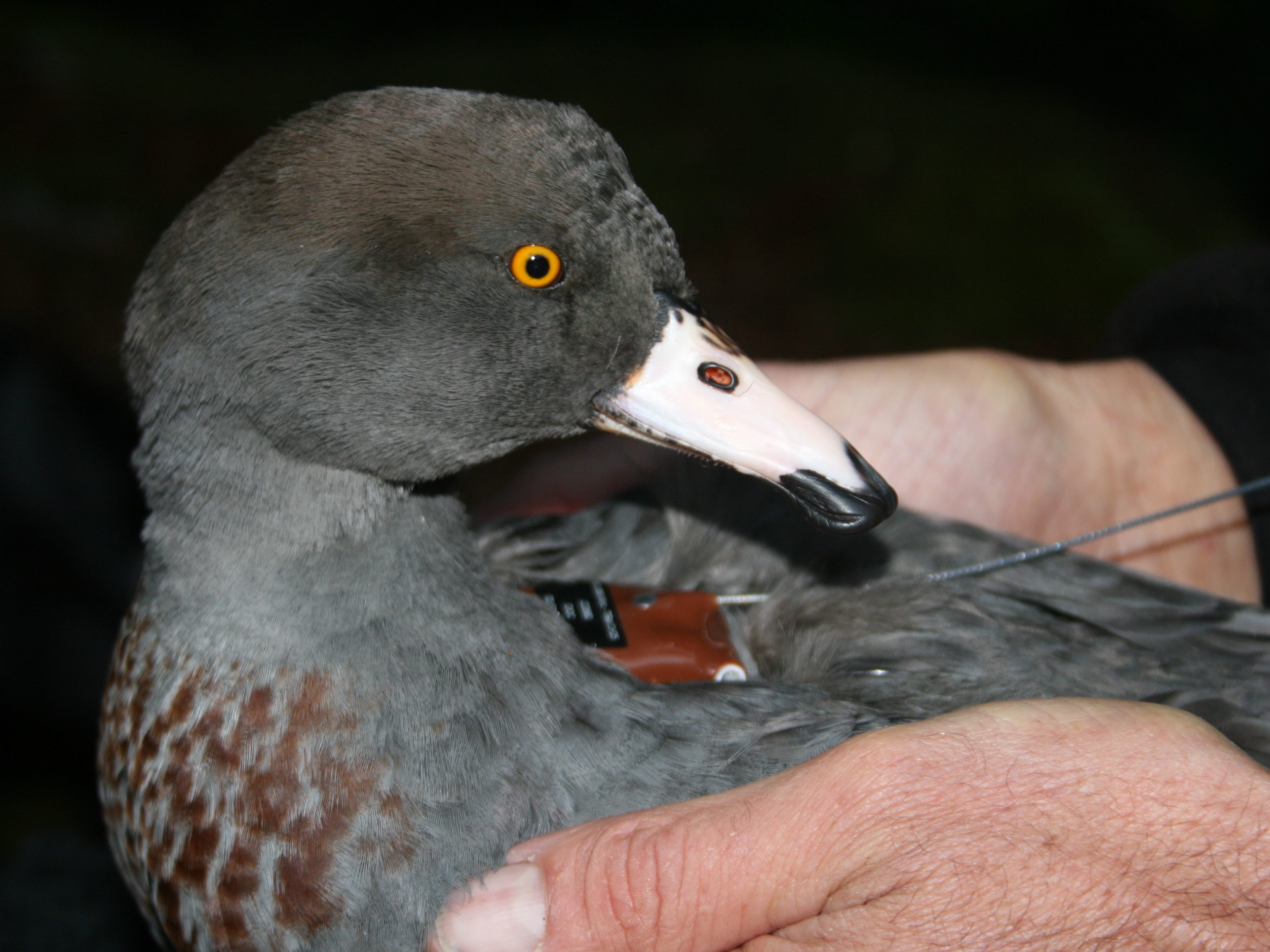
Kate says, “The ultimate finding of the study was that with 1080 operations and trapping in place, we were seeing positive population growth for whio.
“We looked at three phases of the duck life cycle: nesting success, duckling survival, and adult survival. At each phase we assessed whether it was improved or impacted by 1080 use.
“We found that the nesting success phase benefitted the most from 1080. Nesting attempts that resulted in eggs hatching for whio was greater when 1080 was used when compared to trapping alone.
“It was so effective that we saw whio populations increasing with this combined approach.
“However, the effects of 1080 decreased over time. Greatest nesting success was seen in the year directly after a 1080 operation. Due to the gradual reinvasion of introduced predators, after this time stoat numbers had climbed back up again,” she says.
Nesting success can depend on the area of toxin use
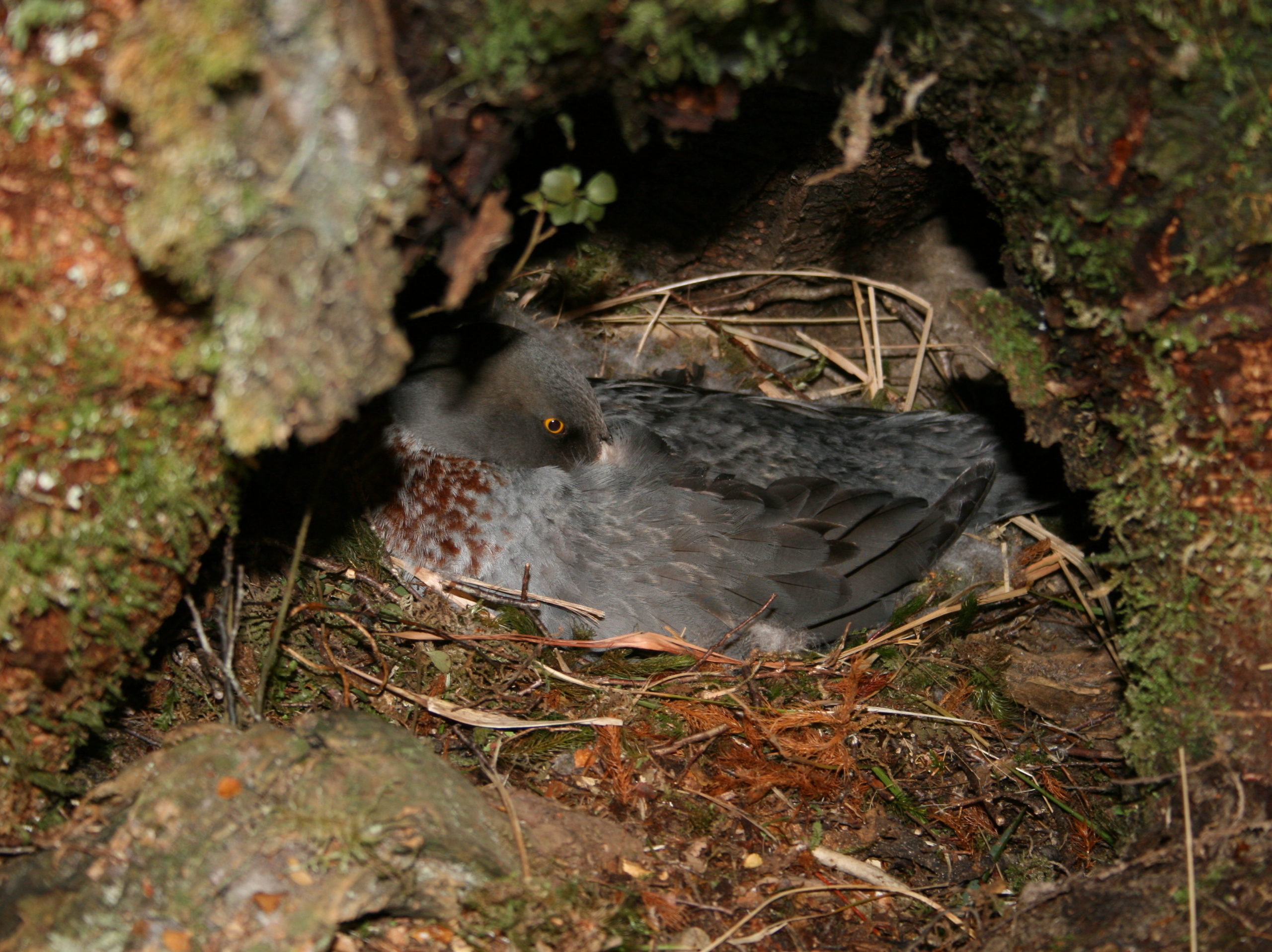
Another key finding of the study was that nesting success can depend on the size of the area that 1080 is distributed in. A larger area means it will take longer for stoats to reinfest the inner areas of that block. So larger treatment areas give more nesting birds a chance of success.
Kate also posits that 1080 use across a large area could be sufficient to control introduced predators without trapping.
Kate says, “One thing we have suggested is that in a really big area – for example if you looked at all of Kahurangi National Park – if just a 1080 operation was in place, you might actually find that is enough for long term population persistence of whio on its own.”
Conversely, Kate notes that there may be a minimum area for 1080 use to be effective.
“I don’t know how effective 1080 and trapping would be in a much smaller catchment, given how quickly stoats could reinvade,” she says.
Location, location, location
This study also showed the location whio populations live in affects the benefits and longevity of 1080 use.
Kate notes that natural land barriers that prevent stoat invasion – such as steep surrounding mountains, like in Fiordland – can extend the life of 1080 use.
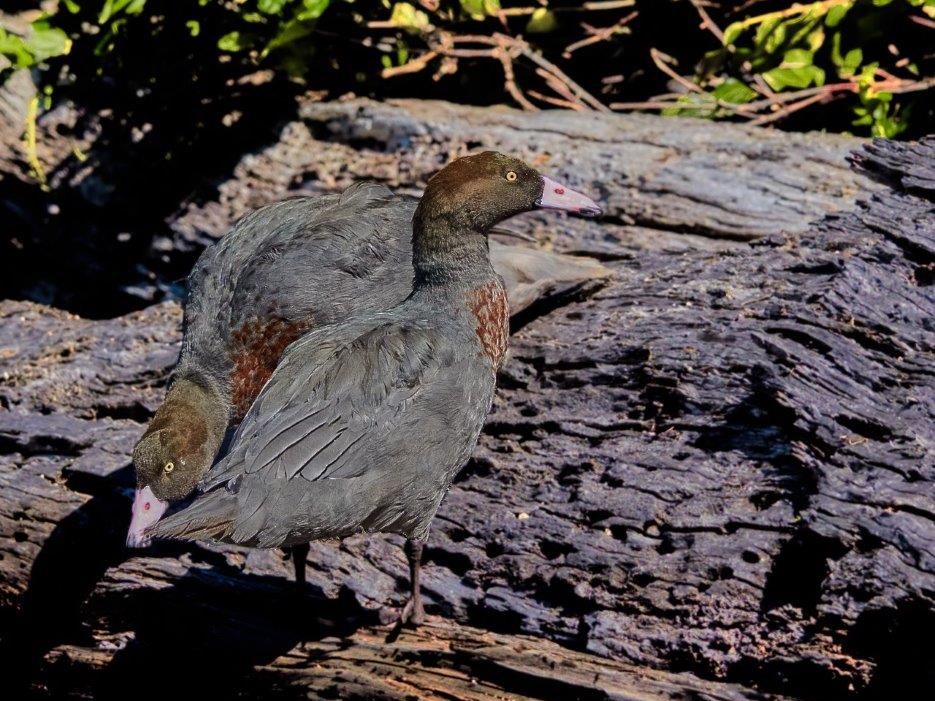
“In these areas, you may not need to use 1080 as often, because reinvasion is that much slower.”
Additionally, areas that were treated with 1080 – but close to farmland, were very quick to be reinvaded by stoats. Unfortunately, farmland provides an ideal environment for stoats and other whio predators to live and breed in, thanks to being home to another favourite food source – the rabbit.
“If farmers were trapping stoats, ferrets and feral cats in these areas, it would be really beneficial. Particularly if they could focus on the bottom ends of rivers where whio are.
“Because whio are generally still in backcountry areas, it would be amazing to see the population get to the point where you can find them readily again in the lowland areas. That will only be achieved with the farmers, and the communities, and everyone else on board protecting those areas.”
Findings will be used to help the whio breeding programme
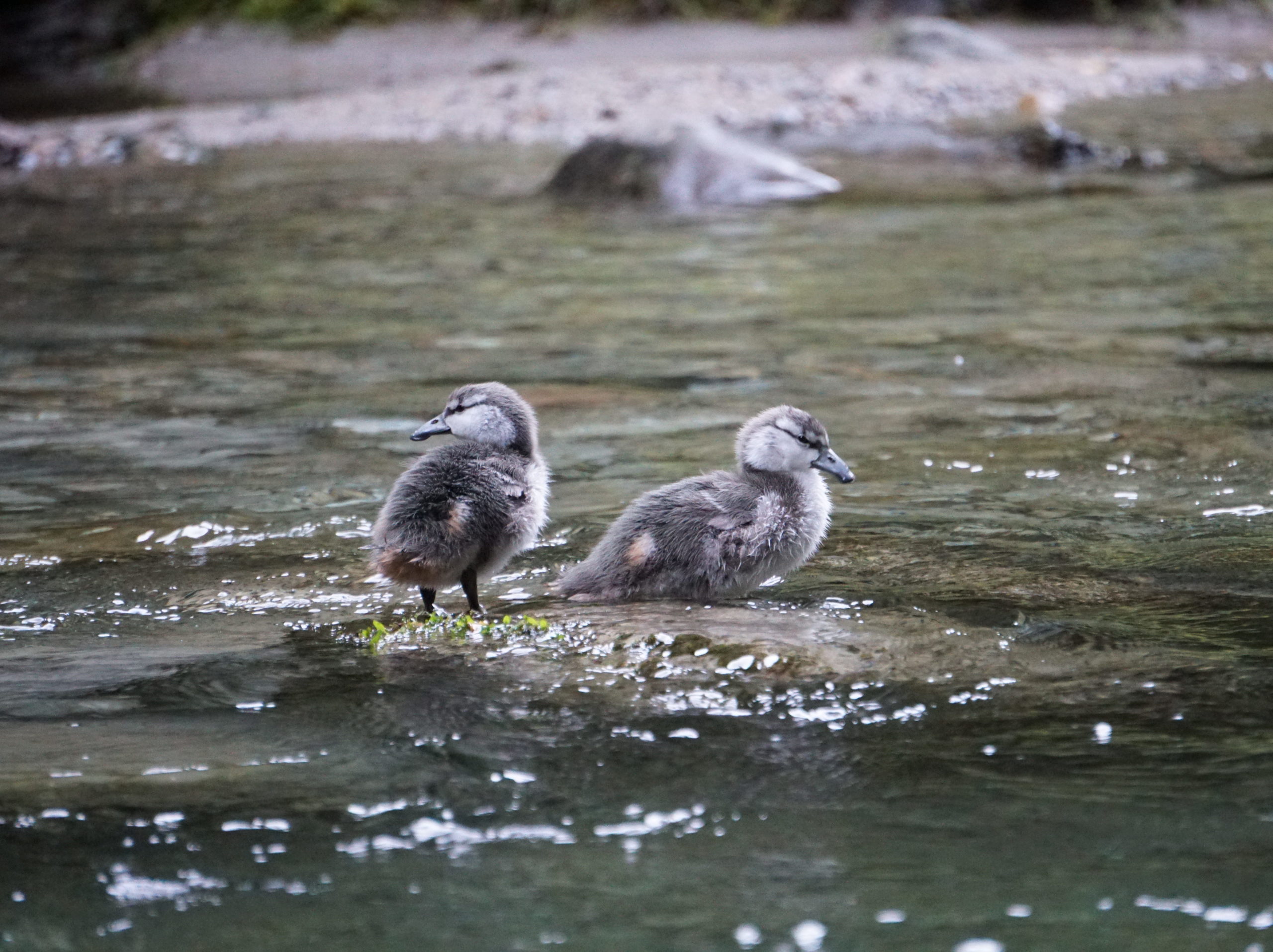
The study concluded that a combination of trapping and 1080 use could be enough to see long-term survival in populations of our plucky whio.
“In the centre of blocks at least as large as our study block (>40 000 ha), a combination of traps and 1080 should be sufficient for long-term population growth of whio”, the study reports.
“Nationally that can be translated across a lot of habitat where whio are found,” says Kate.
Currently, whio management is supported by a rigorous captive breeding programme which includes Whio Operation Nest Egg. Kate says in future, this may not be required for whio populations that are sufficiently supported by predator control methods.
Kate says, “I think if you can get this population to a certain level and protect them with a combined predator control approach, you could reduce the involvement of a captive breeding programme in the future. That would be an exciting day for whio,” she says.
Community trapping helps protect whio
Keen to help protect the plucky whio? You can volunteer or donate to local predator control projects such as the Eastern Whio Link in the Waioeka Gorge, Blue Duck Station in the Ruapehu District, and Farmers for Whio in the Motueka Valley.
And if you own farmland in areas near whio? Why not get trapping.
Keen to dig deeper? Read the full published paper.

